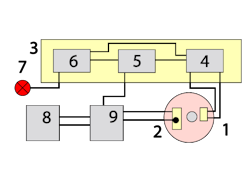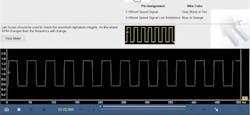Technical Reference: Anti-lock braking system (ABS)—Stop, in the name of safety
Brake system evolution
I have always been meticulous about repairing brake systems. Years ago, on drum brakes, barring any fluid leaks, I wrote the estimate to include a spring kit, along with the shoes, at a minimum. I wire-brushed the backing plate to be spotless followed by applying high temp lithium grease on the contact areas of the backing plate to prevent sticking brake shoes. I would not cut corners to save someone a couple of dollars. Thankfully, anti-lock braking system (ABS) technology has made it exceedingly difficult for anyone to cut corners. This is a great thing when it comes to safety.
A short history on ABS
The concept of ABS was introduced in 1908 by J.E. Francis rolling out his “Slip Prevention for Rail Vehicles.” In 1920, the French automobile and aircraft pioneer Gabriel Voisin worked on developing systems on his aircraft brakes that would reduce tire slippage. Two patents came along between 1928 and 1936, one of which was awarded to Robert Bosch of magneto ignition system fame. The first fully electronic ABS was developed in the late 1960s for the Concorde aircraft. The modern ABS made its way to the automotive industry via Ford in 1969, Fiat Research Center in 1971 and Toyota in 1971. Motorcycles jumped on board with BMW in 1988.
Regulations
In Europe and other international markets, ABS is required on all vehicles sold after 2004. ABS wasn’t mandated in the U.S. until 2012.
Results
Operation
Anti-lock brakes were developed to enable a driver to remain in control of the vehicle during difficult road conditions. When a wheel locks up, stopping distances increase and the vehicle is impossible to steer. By reducing brake pressure to the wheel that originally lost traction, the vehicle will become controllable. An electronic control module uses the inputs from the wheel speed sensors to calculate the onset of a skid. The module is usually mounted on the hydraulic modulator assembly. See the basic components below.
- Wheel speed sensor
- Wheel brake assembly
- ABS control module
- Wheel speed calculation stage
- Brake pressure control stage
- Fault monitoring stage
- ABS warning light
- Master cylinder/brake booster
- Hydraulic modulator
In a nutshell, the electronic control unit (ECU) constantly monitors each wheel speed sensor. When it detects a wheel rotating slower than the vehicle speed, it knows a wheel has lost traction. It actuates the valves to reduce hydraulic pressure to the brake at the affected wheel, thus reducing the braking force on that wheel.
Next, if the ECU detects a wheel turning faster than the others, hydraulic pressure to the wheel is increased so the braking force is reapplied, slowing down the wheel. This process is repeated continuously and can be detected by the driver via brake pedal pulsation. Some systems can apply or release braking pressure 15 times per second.
When working correctly in normal conditions, an ABS-equipped vehicle is nearly impossible to lock up.
If a fault develops in any part of the ABS, a warning light usually is illuminated on the vehicle instrument panel and the ABS will be disabled until the repair is made.
A close cousin to ABS is traction control system (TCS). It is related because it uses the same components that control braking traction during acceleration.
ABS benefits
- Maintain control: prevents lockup, allowing a higher level of control during panic stops
- Traction: grabs the road substrate on wet, icy, or gravel roads
- Shorter stops: reduces stopping distance
- Enhanced steering: when active, driver can continue to steer even with hard braking
ABS limitations
- Decent tires: worn-out tires impact its effectiveness
Diagnosis
Next, we go live with a lab scope looking at a wheel speed sensor on this vehicle. We can simply compare it to a known good pattern to analyze the signal going to the ABS module.
If I have a wheel sensor driver’s front trouble code, it could be a sensor, but it could also be the ABS module or wiring.
About the Author

Keith Wray
With over 45 years of experience in the automotive industry, Keith Wray started his career as a technician/automotive machinist and worked his way up to a service manager for an OEM dealership. He currently serves as the national training manager for Snap-on Diagnostics where he co-develops training materials as well as conducts technical courses for franchisees, employees, end-users, and vocational students.



